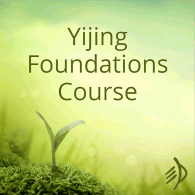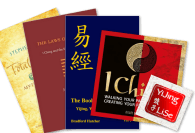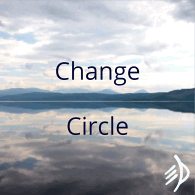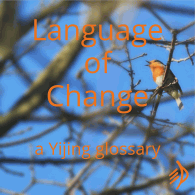On the one hand…
… it makes me unhappy to hear that someone isn’t consulting the Yijing because they ‘don’t have time’. This is distressing and unnecessary. You can connect to a reading intuitively in a matter of minutes, have that unmistakable sense of being spoken to, and develop an understanding you can use.
Then the natural next step is to go and use it. That’s how the divination process unfolds: you open yourself to hear the answer, you connect with it, and then you integrate it into your thoughts and actions. Understanding becomes change: that’s how this is meant to work. There is absolutely no call to keep on digging, adding interpretive tools, tracking down all the associations, making sure you didn’t miss any subtleties.
There are some people who have a strong, lifelong relationship with Yi but don’t keep a journal at all, precisely because they expect their readings to become change. Maybe the idea is that their own life becomes the journal. I wouldn’t be comfortable with that – I have too many readings that take months or years to bed in, and too much to learn from looking back – but it’s an interesting approach. And I do have a lot of readings I only need to look at once (though I still learn a lot from reviewing them).
On the other hand…
When we consult the Yi, it’s because we want to hear what it has to say – so when it answers, we listen. This is basic respect, not to mention common sense.
And so is is possible to take this ‘understand and act’ approach to an unwise extreme: that if you’ve found one bit of reading you can use, you can move on and pretend the rest of it doesn’t exist. If you’ve understood one line, or even found an application for one or two words, you use that and discard the rest. Don’t recognise the tiger in Hexagram 10? That’s OK, you can forget all about it!
If you understand one line of a reading and not others, it is not a good idea to forget about the one you didn’t grasp. It’s the same if you can connect with the relating hexagram but not the primary, or vice versa. (I once failed to grasp a relating hexagram, asked a ‘yes, but how?’ follow-up question without really stopping to think, and received that relating hexagram unchanging in response.)
When an oracle’s talking to you, it’s as well to listen to what it says.
How deep to go?
The thing is, there is always deeper to go into a reading and more to learn from it. Hexagrams are connected with others – through trigrams, complementarity, nuclear, the Sequence, the pairs… – in a whole fabric of meaning, and following the threads, taking a step back to appreciate the bigger pattern, is always rewarding. You might look at the Sequence to see how you got here, or perhaps what you need to leave behind. Looking at the Sequence on a larger scale, though – in the patterns created across 8 or 10 or more hexagrams – and you could see much deeper themes in your reading, and learn ‘what time it is’ on a whole new level.
So how far down the reading rabbit-hole do you want to go?
Naturally, a lot depends on what you’re asking about. Looking at my own journal, I was recently asking about whether to get a refund for a $49 online service – one that does transcription and video editing from the transcript, amongst other things. It was worth consulting about this, because there are things I can’t know here – what uses I might find for the service in future, and how it might be developed (or abandoned) in future – but the issue’s probably not worth much of my time. Even if Yi could reveal deeper underlying issues (which wouldn’t surprise me in the least), the practical approach was to do one reading about refunding, one about keeping access, compare and contrast, decide and move on.
But when it comes to my reading for the year – or the one on ‘how to think about this?’ for an issue that’s been recurring and ongoing for quite a few years – I can only benefit from coming back to it again and again. Each time I revisit it, I’ll be looking at it from new angles, maybe just re-reading, maybe adding a new interpretive tool to the mix, and always learning more.
Those extra interpretive tools – nuclear hexagrams and trigrams, line pathways and the like – need handling with care. Their purpose is to help us understand the response more deeply, to answer the questions we have about it, to give us another way to look at it. In other words, the idea is to encourage reflection on the core answer, not to distract us from it.
Paradoxically, the unwise habit of ignoring chunks of a reading can also be an issue of too many tools – leapfrogging (bunny-hopping?) over the basics in our hurry to get to the favourite tool. I think most experienced users have been tempted by this – to concentrate on the fan yao instead of the cast line, for instance, or home in on subtle trigram relationships to the exclusion of all else. The result can be a very skilled, time-consuming interpretive process that resolutely avoids hearing what the oracle is saying.
Evaluating tools
If you’ve yet to find your own favourite tool, your journal is – yet again – your best guide. Turn to a past reading you understand well, perhaps with benefit of hindsight, and try looking at it through the lens of a new tool – change patterns, shadow, nuclears, whatever grabs you. (Note: if you have no idea what these are, and don’t have time for this anyway, that’s not a problem – you can do perfectly good readings without them. But if you want to learn more, see the Change Circle Library.) Ask yourself, ‘If I’d used this tool then, what would I have thought? What would I have learned? Would it have helped?‘
This is how I’ve built up my own ‘toolbox’ over the years – bringing the tools to bear on present readings, of course, but also when I’m learning a new one, I will go through a dozen or so past readings to see how it really works, and whether I can sum up what it really has to tell me. If it would have helped – especially if I find myself thinking, ‘If only I’d looked at that at the time!’ 😉 – and if exactly how it would have helped is consistent across readings, then it probably finds its way into the in-depth readings I do for clients, too.
And speaking of in-depth readings for clients… I’m going to open for full readings soon. There are two kinds of I Ching reading in the ‘shop’ here: I Ching chats, where we talk through a reading for half an hour and I provide something like a map of the reading you can use to explore further for yourself; and full I Ching readings, where I keep you company on the ‘reading journey’, as it were, for a month of calls and emails. Those full readings demand my full attention, so I only read for a few people at a time, and only open for them intermittently – in fact, this is the first time in years that it’s felt right. But now it does, so if you might be interested, have a look at the description of the service and add yourself to the notification list.










This was very helpful. Thank you! It has been a very long time since I have done a consultation. I only use the yarrow sticks method, which does take a fair bit of time because it is a very meditative process for me. I am a spiritually minded and heartfelt person that is oriented towards and striving to live my life in what I call Christ Conscience. Having said this, for me, Yi works in consort with the Christian concept of the “Holy Spirit”. And I must say that I have had some significant readings that have given me pause to marvel about. Would you have any comment to make about my particular process? Thank you! — Paul.
It sounds beautiful. What else to say? You consult when you’re drawn to, as often as you’re drawn to, and the oracle talks to you.
I think you were addressing this to Hilary? But I have a question. You mentioned that you are a religious person and that Yi works in consort with the Christian concept of the “Holy Spirit”.
Well I too am a Christian believvv er but was always told that divination is an abomination to God, I guess because one isn’t believing in Christ by asking Yi things cause one is not trusting in Christ’s power but that of Yi. I’d askton of questions of theYi Ching if I weren’t afraid to do so.
There’s a lovely book written by a guy called Joseph Murphy called ‘Secrets of the I Ching’ which relates the hexagrams and lines back to Biblical passages. I’m not a Christian in the strict sense but I love this book. Has a definite aura of Inner Truth about it. It was published in 1970 and I think you’ll find a PDF on the Web if you search around. Don’t know if there are any physical copies floating any more.
The question would be whether Yi’s power and Christ’s are two separate things, an either/or. If Yi is a power that speaks the truth, what is it?